Wy use a wire rope
Tension
A rope can be a hauling respectively a tensile element / a rope cannot take over any pressure!
By means of a rope one can change the direction of a force (using a sheave)
By means of a rope one can transform a rotating movement to a linear one and vice versa. (using a winch or just a friction sheave)
Suspension
A rope can be used to suspend other elements
To suspend a track
To be a track
Combined functions
Suspending and hauling
Conclusion: There is no other „element“ or „subsystem“ able to adequately take over all the functions a steel wire rope normally does!
A wire rope should be able to take over high tensile forces be flexible be a safe sub system Explanation why a rope takes over high tensile forces, why it is flexible and why it is safe What are the potential problems with the wires with high grade, what do we have to take care of? Some further demands Mention the contradiction among the different demands
A wire rope should be able to:
take over high tensile forces
be flexible
be a safe sub system
Explanation why a rope takes over high tensile forces, why it is flexible and why it is safe
What are the potential problems with the wires with high grade, what do we have to take care of?
Some further demands
Mention the contradiction among the different demands
Wire rope manufactoring
First step is to spool the wire.
Wires of various diameters and grades are used to produce a strand.


Second step is to produce the strands and...


Second step is to produce the strands and the core


Third step is to close the strands over the core.


Wire rope
Parts of Wire rope

Designation and classification of wire ropes
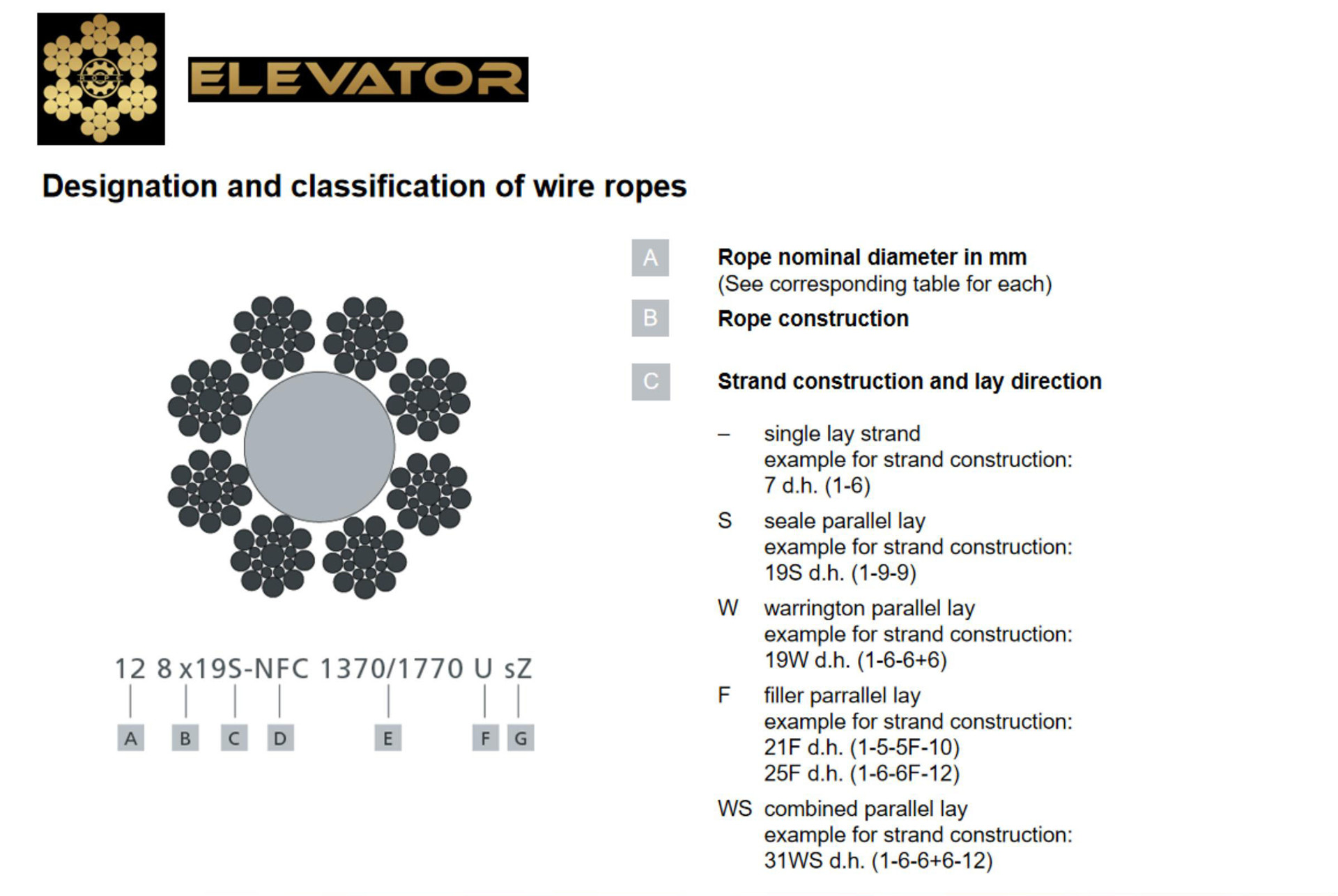
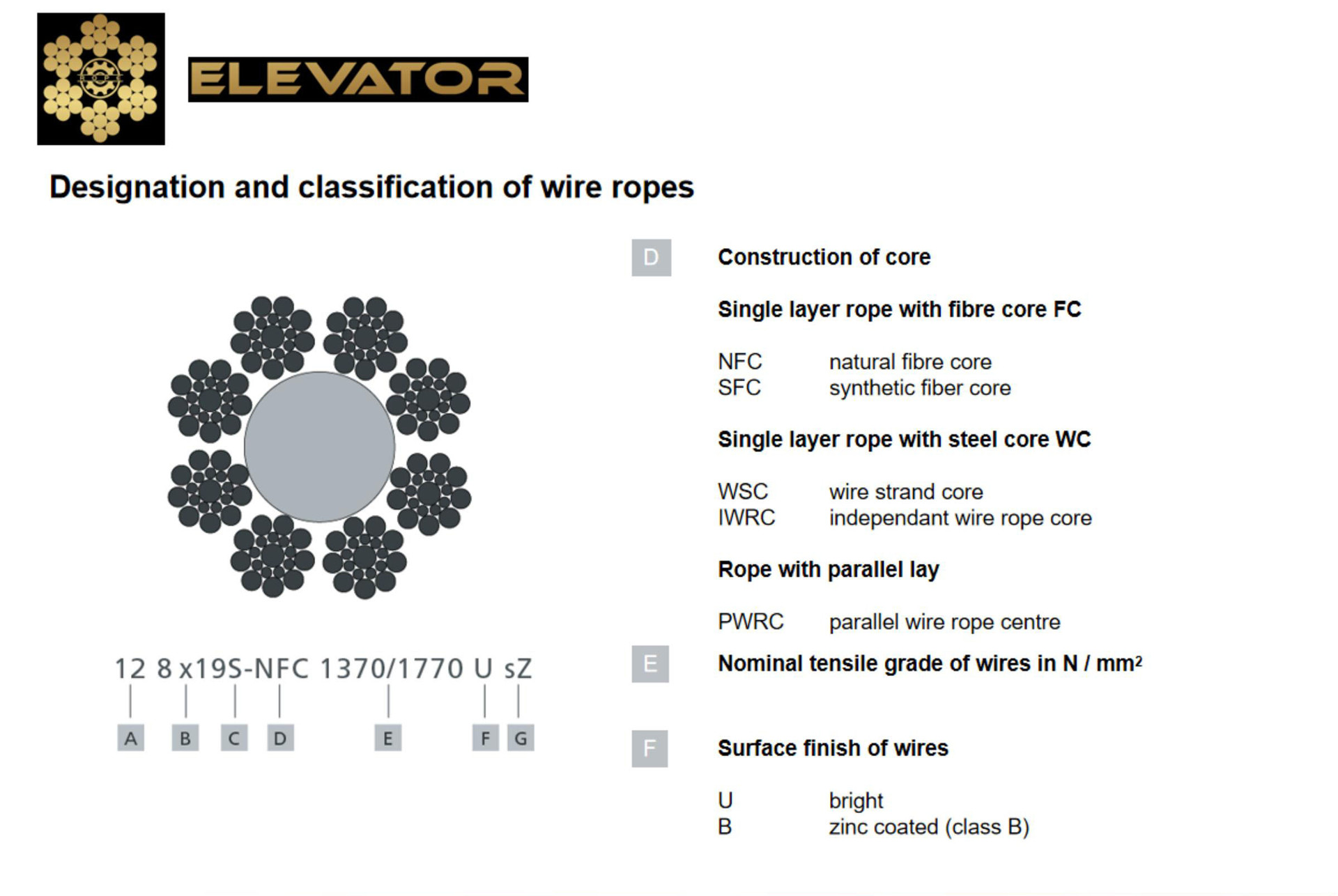
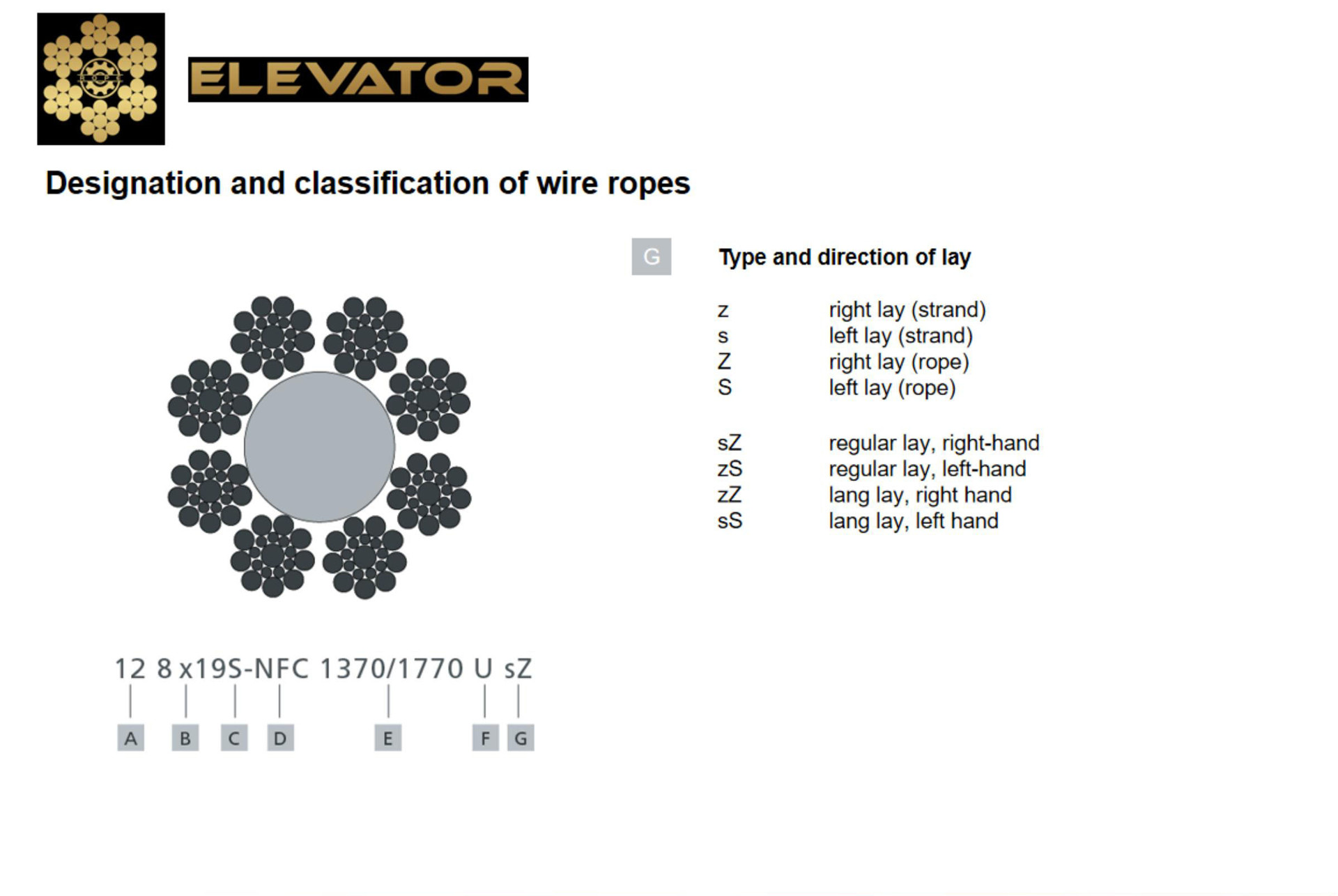
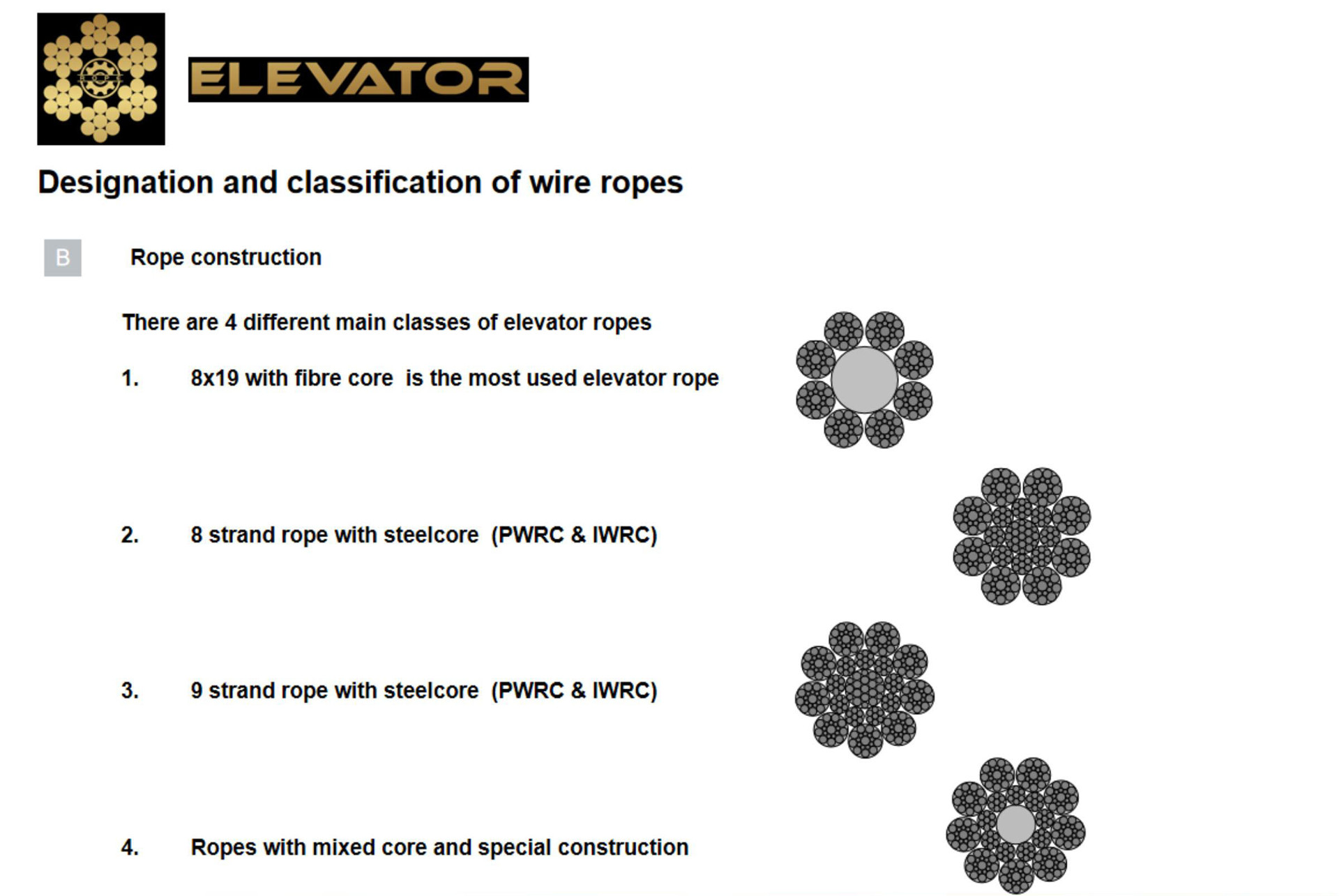
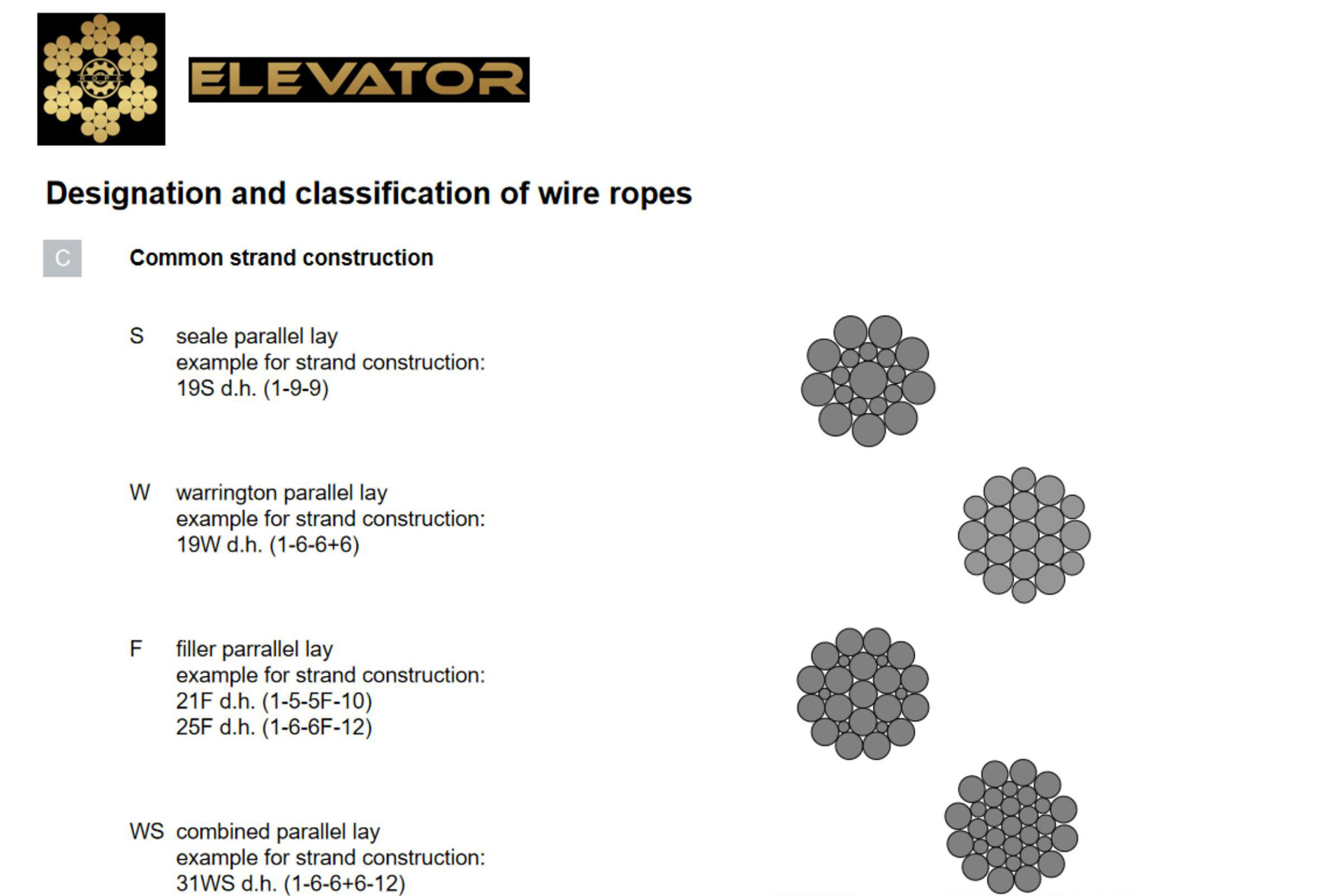
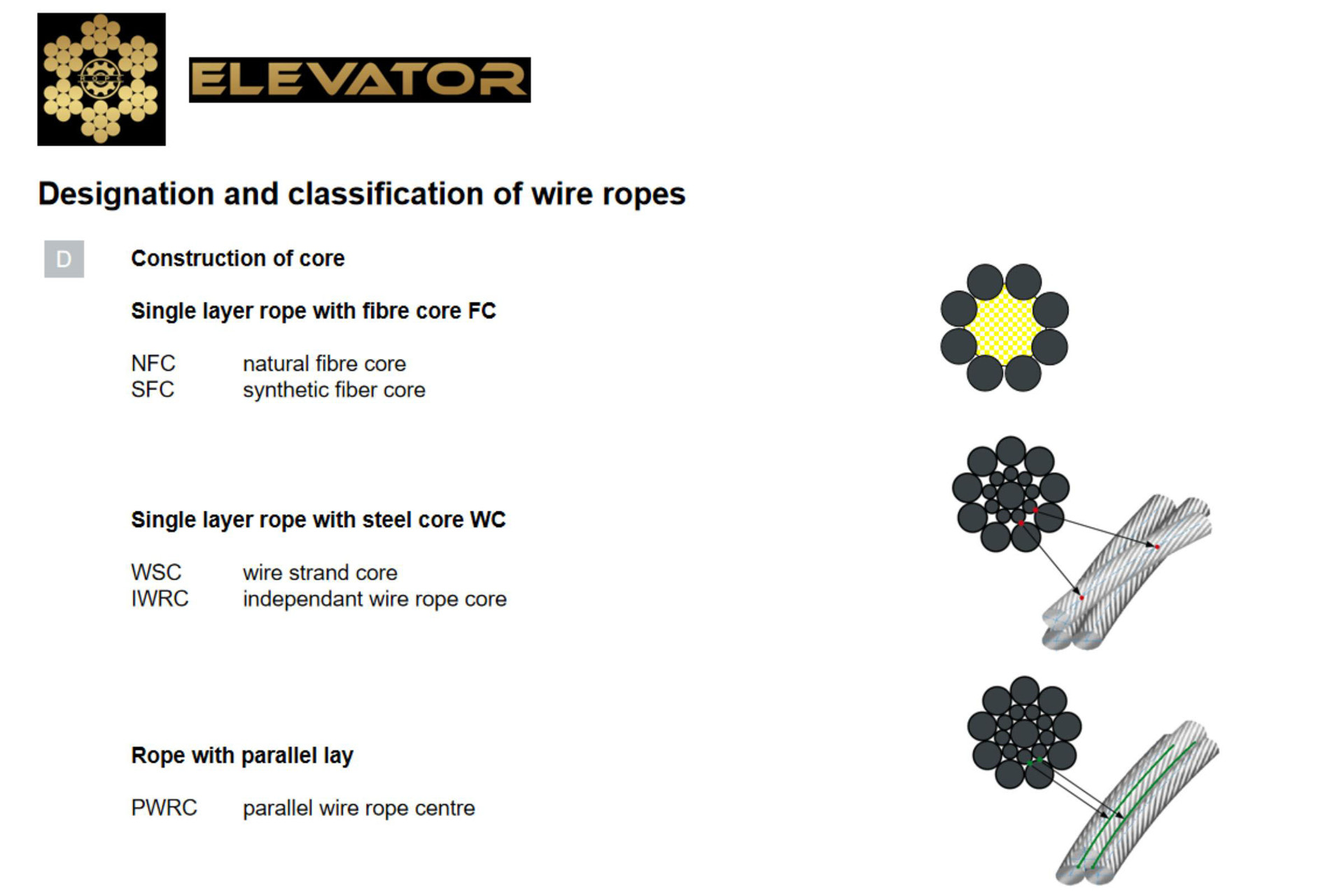
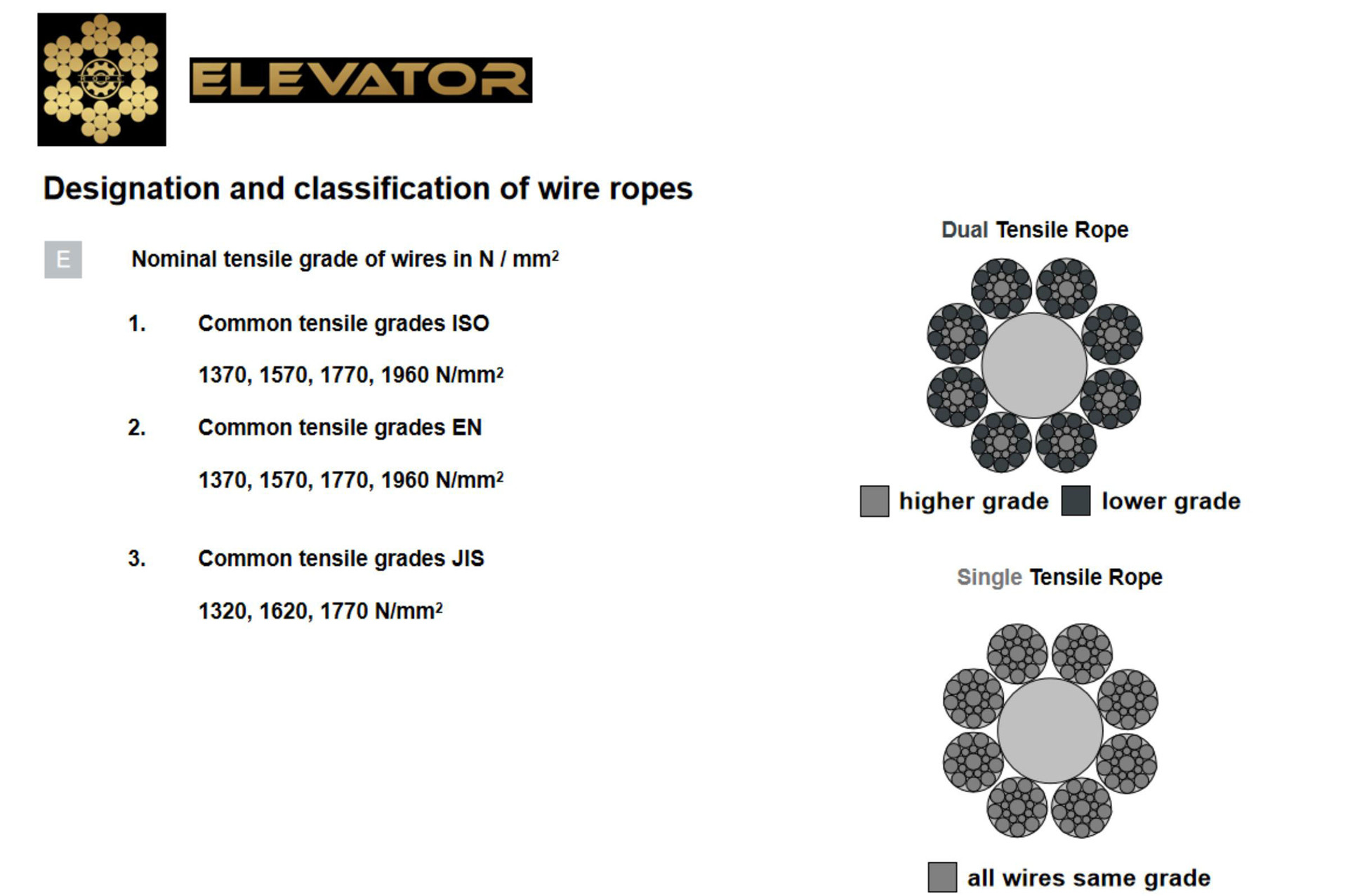
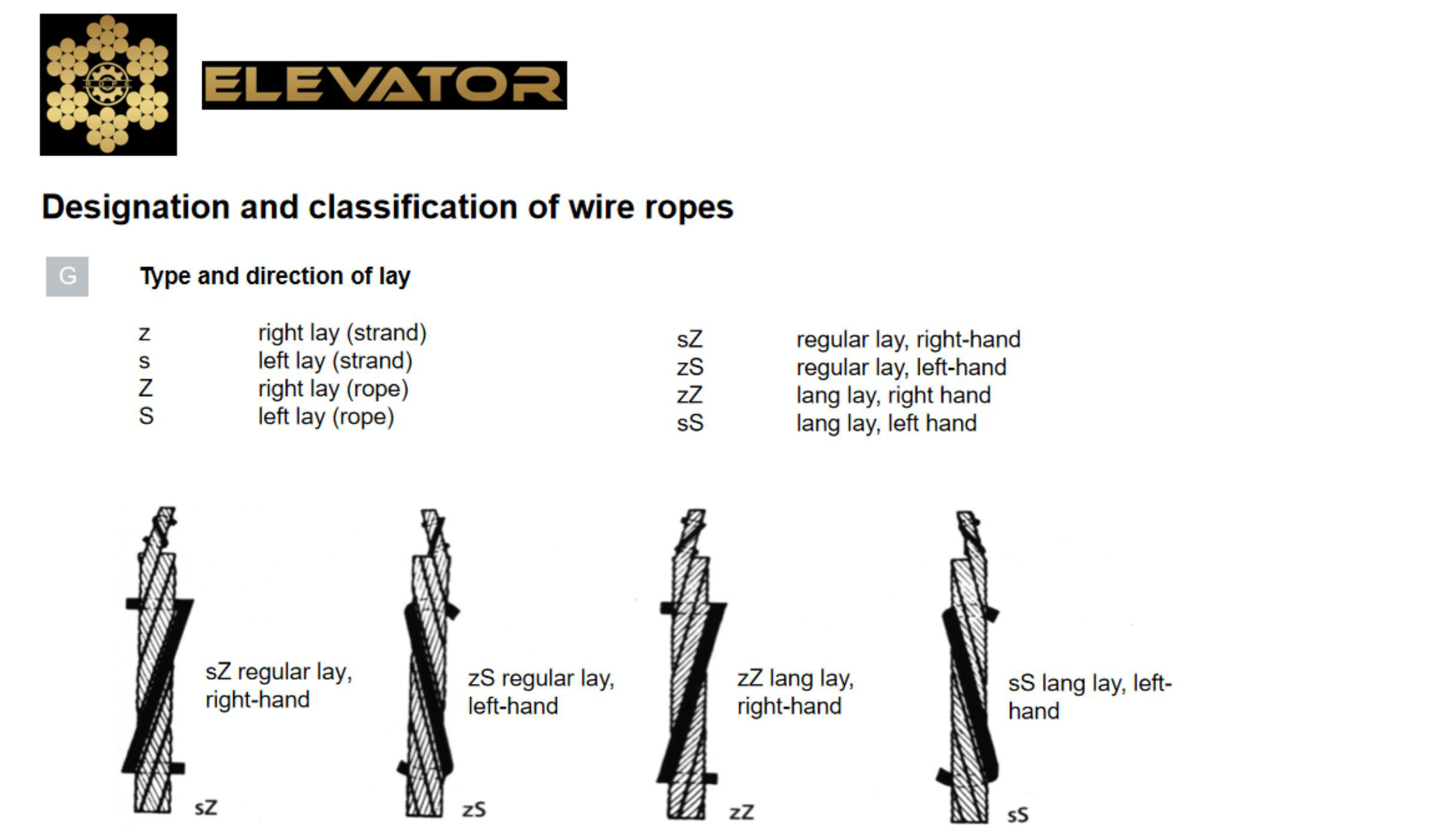
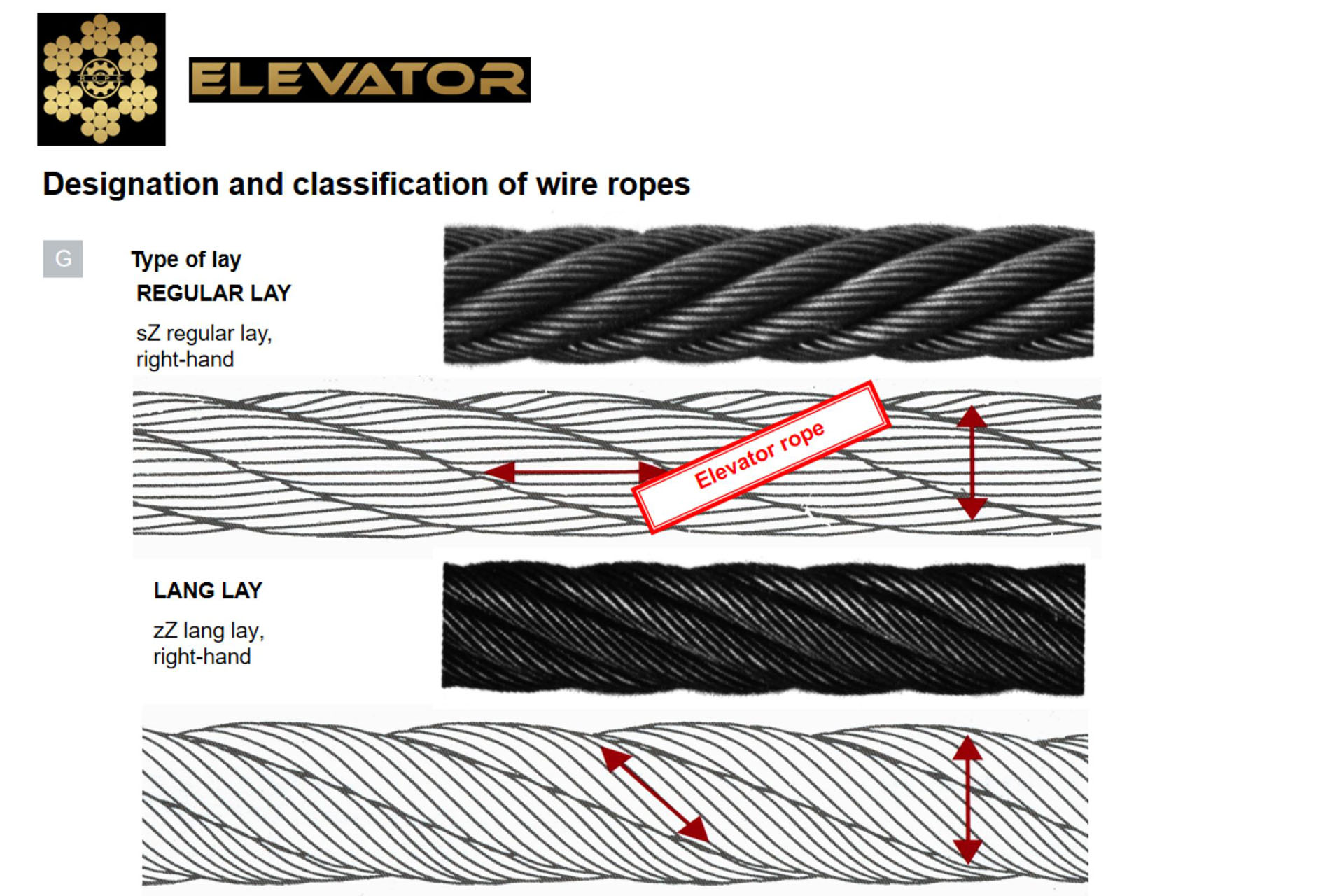
Breaking Load
The breaking load is the force you need to break the rope.
We differ between 3 forces:
Minimum Breaking Load MBL
Is the force we quarantee
Calculated Breaking Load CBL
Is the force calculated out of the metallic area and the tensile strength of the wire
Tested Breaking Load
Is the tested force in a rupture test
The unit is N Newton or KN Kilonewton
Spinning factor / Spinning loss factor
The spinning factor is the experience factor which consider spinning loss during rope closing
The spinning loss factor is the difference beween the Calculated Breaking Load and the Tested breaking Load.
The size of the spinning loss factor is based on the Rope construction, the type of lay, the tensile grade of the wire.
The unit is %
Lay length / Lay Angle
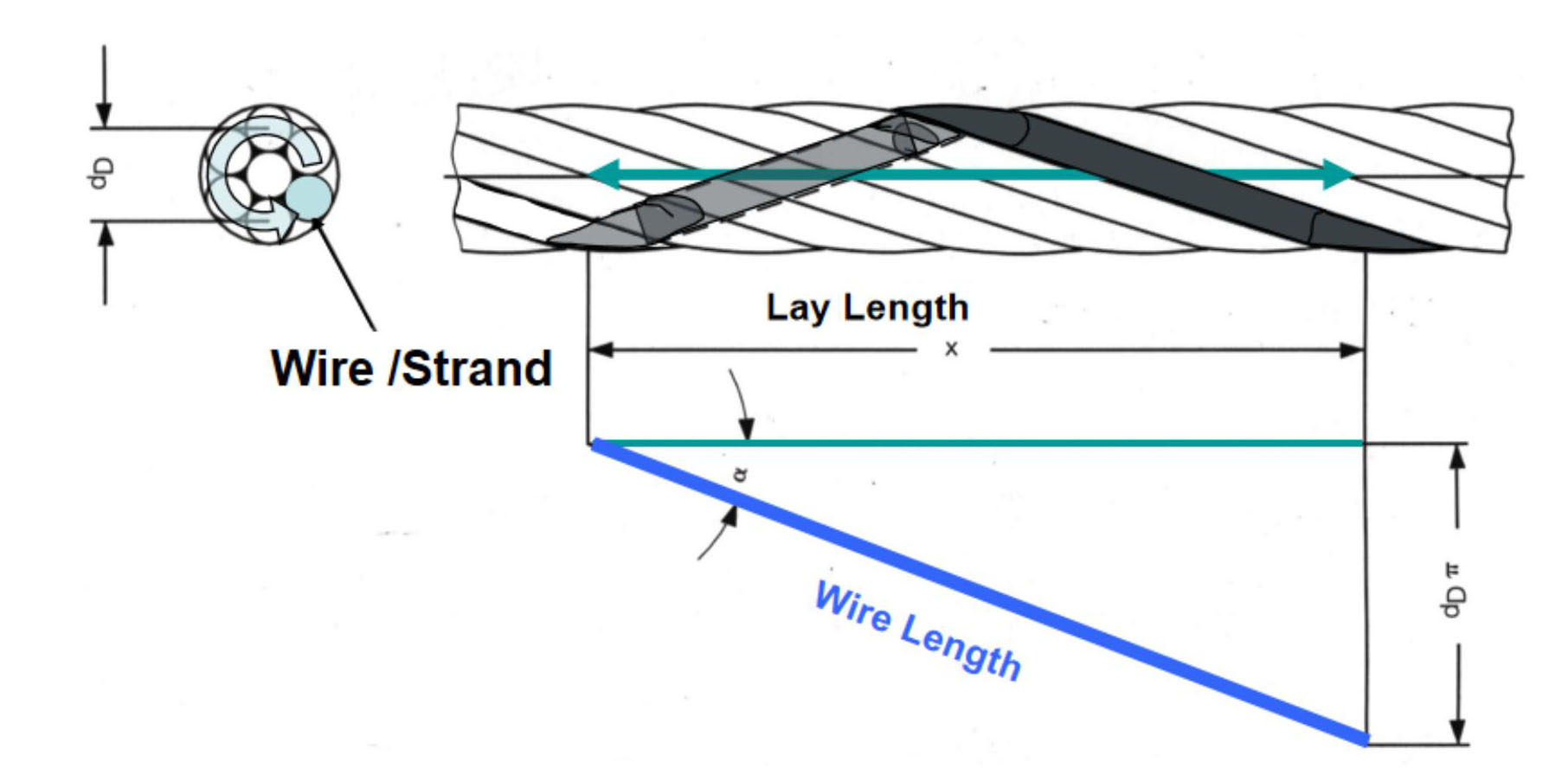
Lay Length
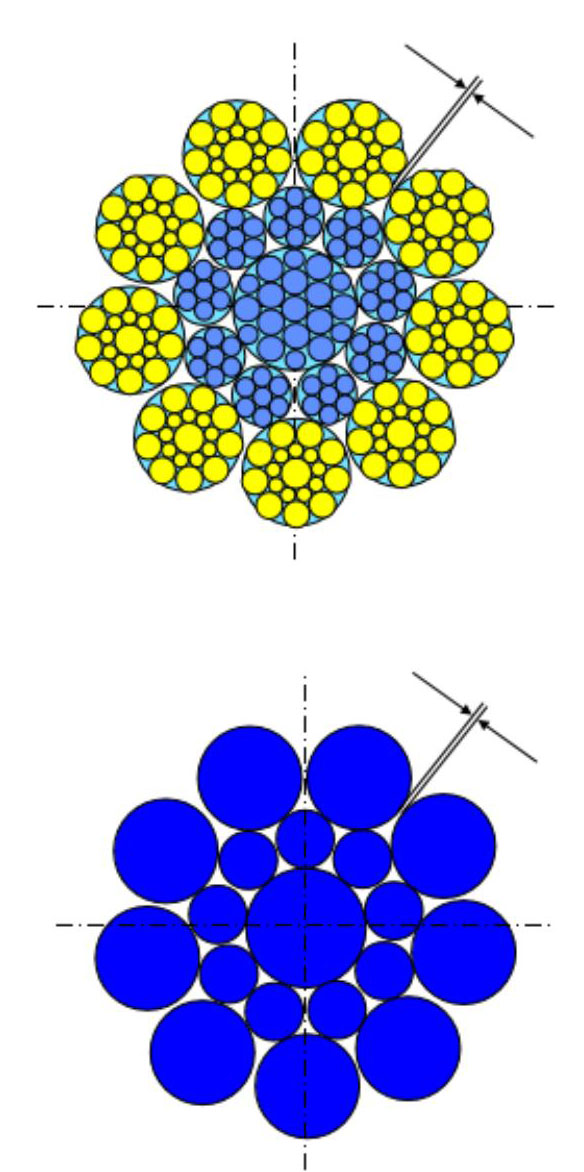
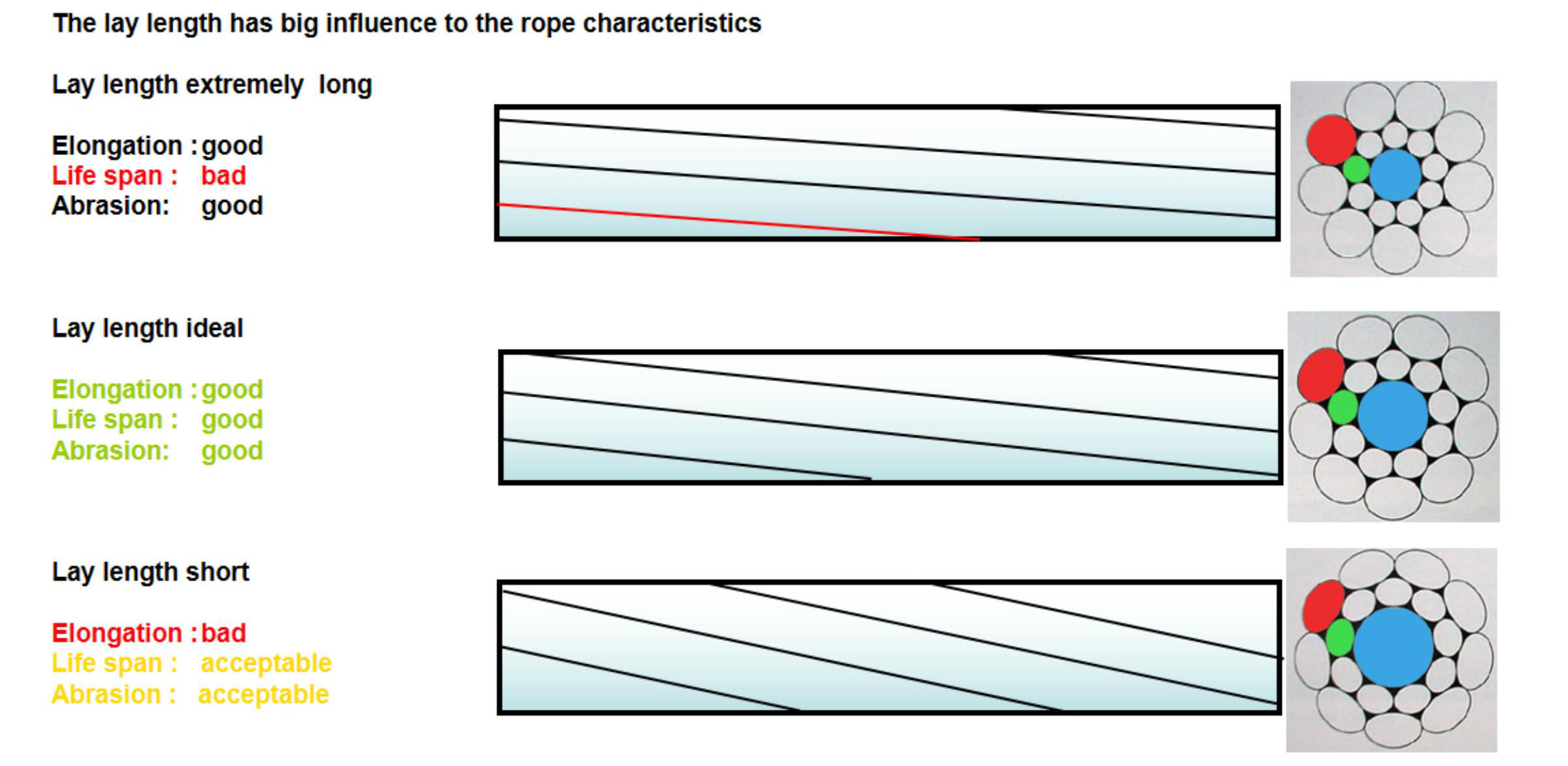
Pre-Forming
Pre forming is working step in the rope closing. This step is directly situated before the closing point .
The result of the pre forming is the Helix.
Pre forming has an influence of:
1) the setting
2) flexibility
3) degree of efficiency of the rope.

Ropes easier to handle
Longer life due to better load distribution
Resistant to kinking
Broken wires lie flat

Due to the post forming of the rope or strand, the individual strands or wires get their final position in the rope or strand.
Preforming
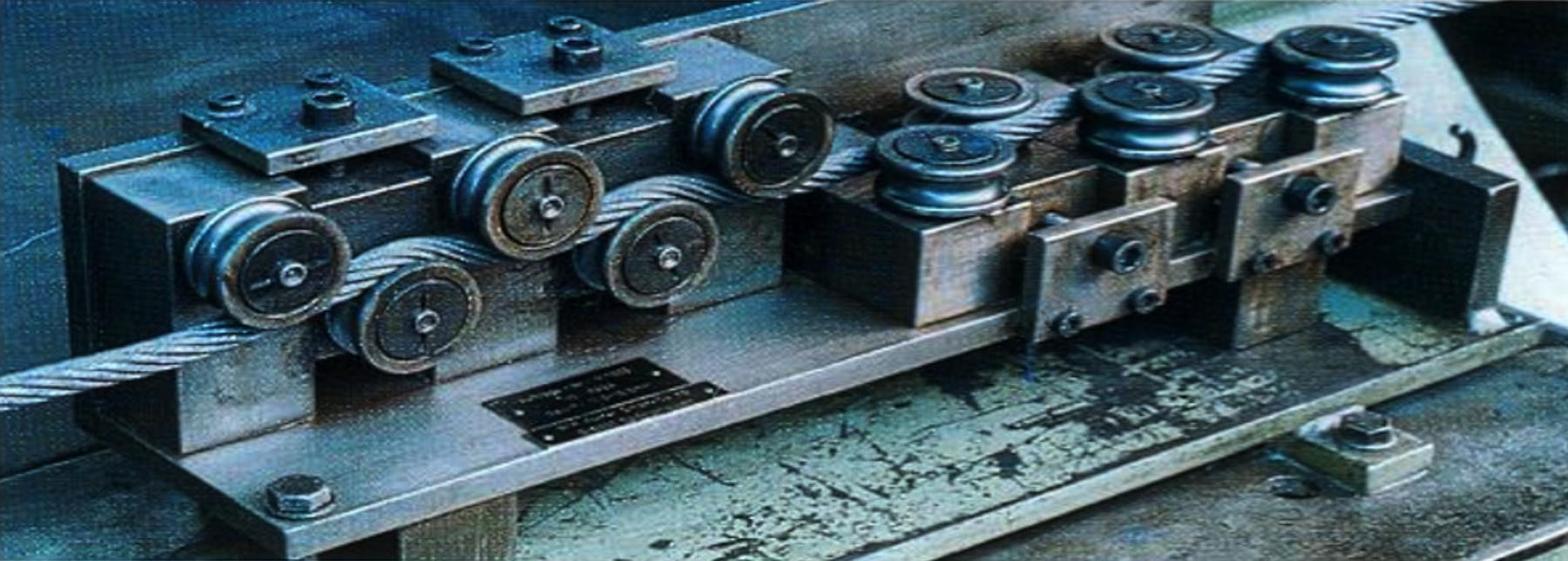
Pre-Forming

We differ to kind of clearance
Rope clearance
Strand clearance
Clearance means the geometrical defined gap between the single wire s in case of the strand, or between the strands in case of the rope.
Only with exact calculated ropes and strands it is possible that the single components and the whole rope works perfect.
For different application areas the clearance have to be adjusted
Rope / Strand calculation
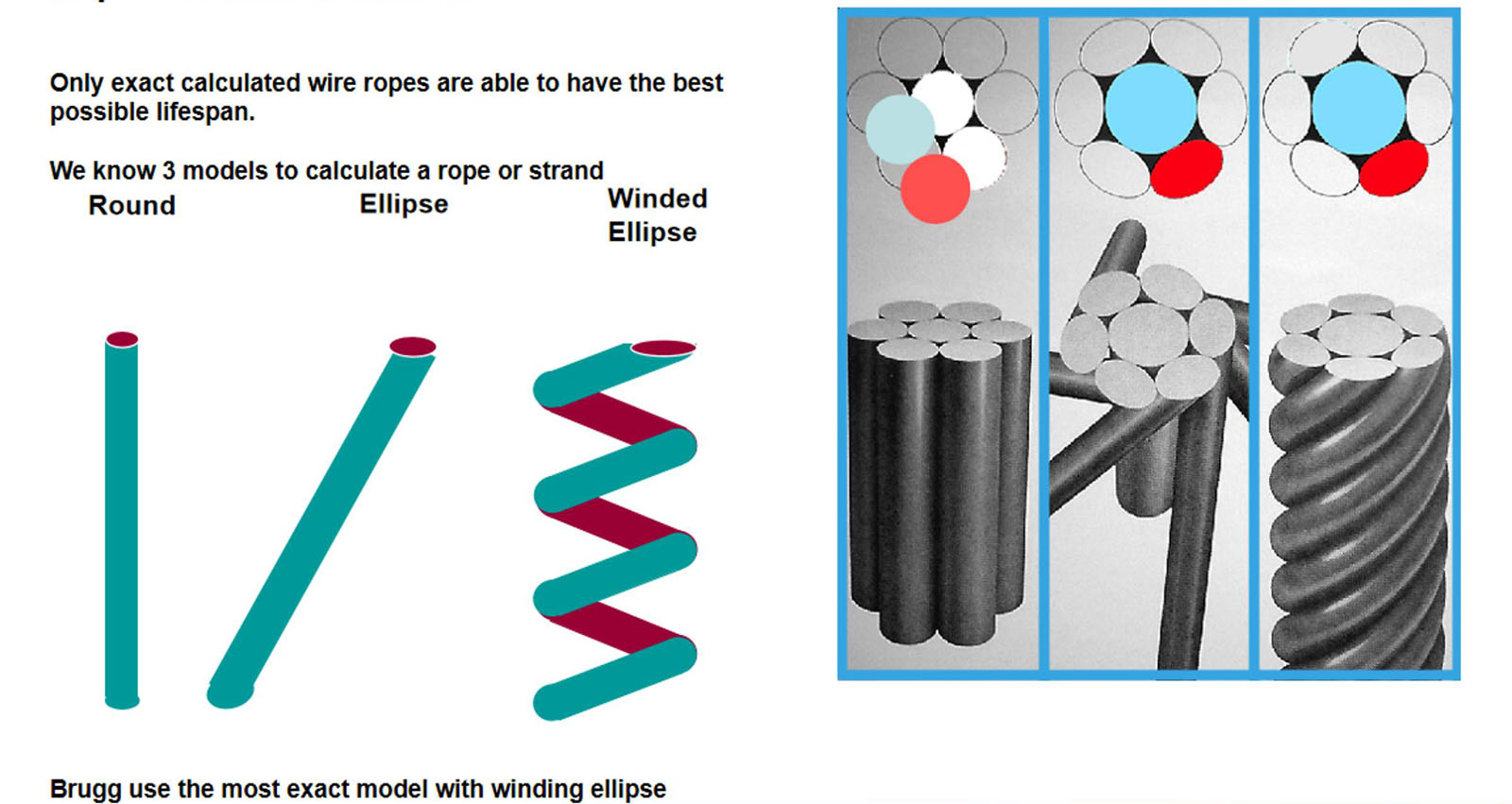
Post time: Feb-25-2022

